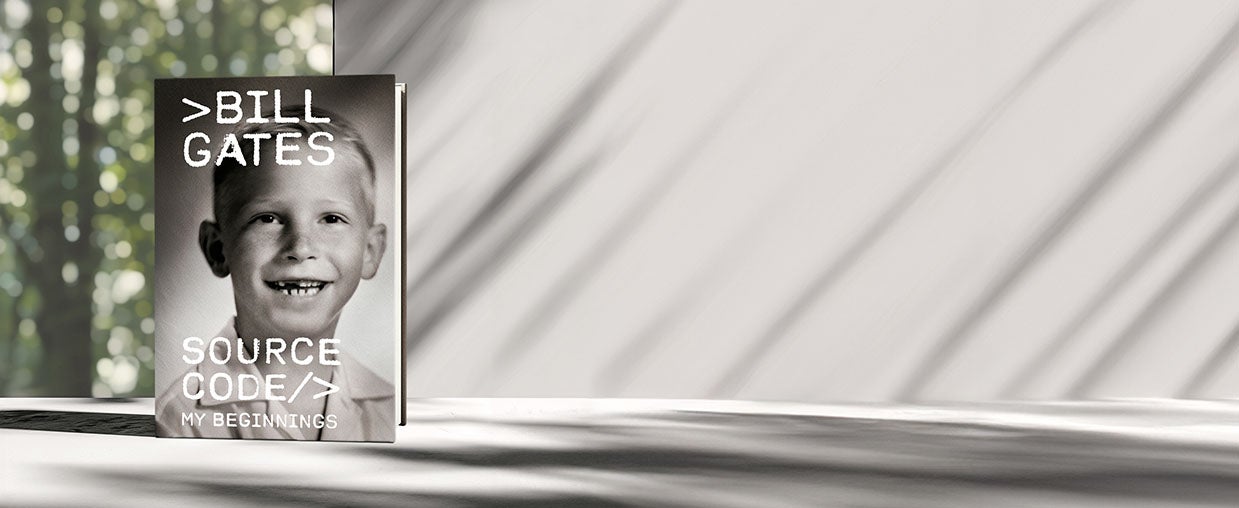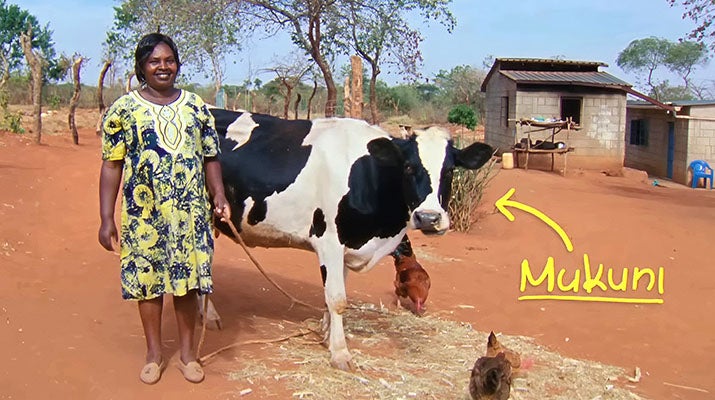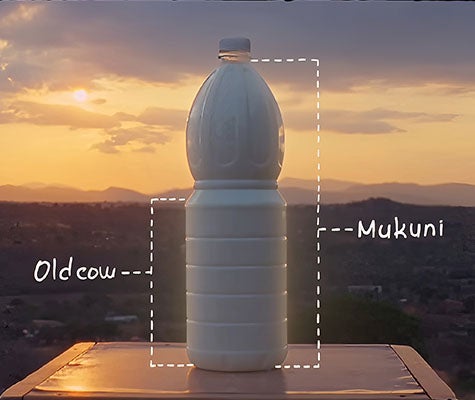Array
(
[name] => Gates Notes
[uri] => https://www.gatesnotes.com
[icon] => https://www.gatesnotes.com/favicon.ico
[donationUri] =>
[items] => Array
(
[0] => Array
(
[uri] => https://www.gatesnotes.com/Breakthrough-Energy-Summit-2024
[title] => The Clean Industrial Revolution has arrived
[timestamp] => 1719266400
[author] =>
[content] => And it’s on display this week in London.

Open the newspaper, turn on the TV, or go online, and you’ll find alarming headlines about raging wildfires, devastating storms, and severe droughts. Climate change is staring us in the face, and the evidence is everywhere. What's harder to see, unless you know where to look, is growing evidence that we're making real progress in the fight against it. That's why I'm so excited to be in London this week for the Breakthrough Energy Summit. Here, this progress is on full display, and we’re bringing together global leaders, industry executives, innovators, and investors to accelerate it.
When we launched Breakthrough Energy back in 2015, the Paris Agreement had just been adopted. Nearly every country on earth committed to ambitious emissions cuts in the fight against climate change. But it was clear that meeting these goals would require unprecedented investment from the private sector to drive innovation. It would also require extraordinary collaboration across all sectors to get clean energy ideas out of the lab and into the market affordably and at scale. This work has been Breakthrough Energy's mission from day one.
At the first BE Summit in 2022, I shared updates on the cutting-edge concepts and companies we’re supporting that address the five grand challenges—manufacturing, electricity, agriculture, transportation, and buildings—behind most of the planet’s greenhouse gas emissions. This year, in London, we have much more to share: a portfolio of climate technologies that aren't just theoretical or promising anymore, but proven and ready for the market today.
That's what makes this summit so momentous. In less than a decade, investment has helped turn pipe dreams into a pipeline of transformative solutions. Now, it’s time to invest so those solutions can scale up, deploy, and slash emissions in every sector of the economy.
Manufacturing – 29% of global emissions
Manufacturing—how we make almost everything—is one of the hardest sources of emissions to cut. While the challenges here are complex, the pace of progress has been incredible, and faster than what I hoped when I started Breakthrough, especially in cement and steel, which each contribute around 10 percent of all global emissions. CarbonCure has pioneered a way to inject waste carbon into fresh concrete, the end product cement is used for—making the second-most consumed material on earth much greener. Their retrofits of existing facilities, deployed at over 800 locations worldwide, have prevented nearly half a million tons of CO2 from entering the atmosphere.
Meanwhile, Ecocem’s ACT technology for low-carbon cement was recently approved for full commercial use across Europe—while another of its low-carbon concrete solutions was used in construction for the Athletes’ Village at the upcoming Summer Olympics in Paris. And Boston Metal has nailed the production of “green” steel without coal at scale, and now has a facility up and running in Brazil.
Electricity – 29% of global emissions
Most experts agree that the world’s electricity needs will triple by 2050. And when it comes to climate change, electrification is a key part of the solution. But only if the electricity is green; otherwise, we’re just swapping one source of emissions for another. Until recently, we haven’t had good options for storing electricity at scale, which made it hard to get the most out of intermittent renewable energy sources like wind and solar. Now, Form Energy’s affordable batteries can store this energy for multiple days and make it more reliable. Their West Virginia factory, which is nearing completion, is bringing over 750 jobs to a town whose tin mill recently closed. And TS Conductor’s advanced power lines, already commercially deployed, can double the amount of transmittable power and help maximize our current grid’s efficiency.
Agriculture – 20% of global emissions
What we grow and eat has a huge impact on the climate. But Pivot Bio is lessening that impact with microbial products that allow crops to draw nitrogen from the air, giving farmers something they’ve wanted for a long time: a more reliable and efficient form of fertilizer. Their solutions—which produce less than one percent of the emissions of synthetic fertilizers and need 1,000 times less water—are already being used across five million acres of land to help farmers improve productivity while eliminating emissions. And Rumin8, whose feed supplements have successfully reduced livestock methane emissions by over 90 percent while boosting productivity, demonstrates that we can enjoy beef and dairy without the high environmental costs they're typically associated with. They recently opened a demonstration plant in Australia to showcase the commercial viability of their products.
Transportation – 15% of global emissions
Electric vehicles are the future, but their batteries are made of resources that are both limited and difficult to source responsibly. One solution is recycling—and Redwood Materials has figured out a better way to do it. At their facility in Nevada, the metals found in recycled batteries are refined and then reused in new batteries, all while emitting 40 to 70 percent less than other recycling processes. But recycling alone won’t be enough to meet the growing demand for EVs and electrification more broadly. New supplies will be needed—something KoBold Metals has cracked the code on. They’re using AI to more reliably find minerals and metals that will undergird the energy transition, most recently copper in Zambia.
Long-distance and heavy-duty transportation still have significant technical hurdles to overcome, but there’s impressive progress being made, particularly in aviation and shipping. ZeroAvia, for instance, is developing hydrogen-electric aircraft engines with operations in the U.K. and U.S., and their prototype engines are successfully flying aircraft in early trials.
Buildings – 7% of global emissions
Ensuring that buildings are warm in the winter and cool in the summer takes a lot of energy—and much of it gets wasted by single-pane windows and leaky ducts that let heat and AC slip out. But there are new options to help fix these issues. LuxWall has created ultra-insulating window glass that is so efficient, it performs like a wall you can see through. After years of R&D, their windows are rolling off the production line at their first commercial factory in Michigan; once installed, the windows will cut both costs and emissions. Then there’s Aeroseal, whose innovative polymer technology finds and plugs air leaks in a building’s envelope and ducts and is already commercially deployed.
Carbon Management
To limit global warming, though, it’s not enough to stop emitting greenhouse gases going forward. We also need to manage what’s already been emitted. In Arkansas, Graphyte is turning plant waste into carbon-trapping bricks and burying them underground; if they sequester 50,000 tons of carbon by 2025 as planned, it will be the largest carbon removal project in the world. In California, Heirloom Carbon’s first-in-the-nation commercial Direct Air Capture facility uses limestone forty feet high to absorb carbon from the air like a sponge. The pilot facility is removing 1,000 tons a year already, and they have plans to scale rapidly.
These are just a few of the more than 100 BE-backed companies that are gathered in London this week to showcase their solutions—all addressing the grand challenges, all ready to work, and all proof that the Clean Industrial Revolution is here. (For more on the progress we’ve made and what’s still left to do, see BE’s latest State of the Transition report.)
Now we need to supercharge our support and ramp up our investments. With commitments and capital from governments and industry leaders, we can deploy these solutions and get them to scale. We can drive down the stubborn green premiums that make a lot of clean technologies more expensive than their dirty counterparts (and too expensive for widespread adoption). We can keep the innovation pipeline flowing. We can get much closer to an abundant, affordable, clean energy future.
Thanks to brilliant minds, big ideas, and bold investments, transformative climate tech has arrived. It's here in London. The Breakthrough Energy Summit is where the momentum that’s been building since 2015 meets the marketplace. I can’t wait to talk to everyone here about where we go next. And I’m eager to see how the connections, partnerships, and investments forged over the next few days help this climate tech reach everyone—and help us reach net zero.
[enclosures] => Array
(
)
[categories] => Array
(
)
[uid] =>
)
[1] => Array
(
[uri] => https://www.gatesnotes.com/Wyoming-TerraPower-groundbreaking
[title] => We just broke ground on America’s first next-gen nuclear facility
[timestamp] => 1717970400
[author] =>
[content] => Kemmerer, Wyoming will soon be home to the most advanced nuclear facility in the world.
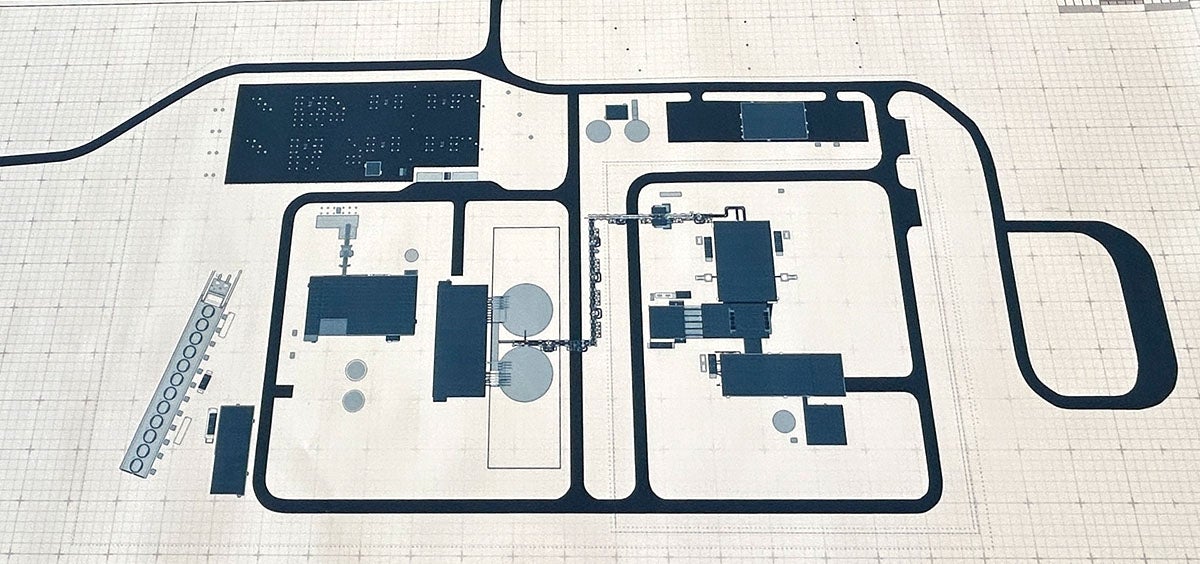
Hello from Kemmerer, Wyoming! It’s been just over a year since my last visit, and I’m blown away by how much has changed.
One of the oldest buildings in downtown Kemmerer—once an opera house—has been restored and is now home to a mercantile and a bakery. Just down the street, the owners of the local coffee shop have purchased an 100-year-old building to expand their operation. A law office has opened, and city officials tell me that plans are moving forward for new multi- and single-family housing developments.
I’m thrilled to see so much economic growth happening, because Kemmerer will soon be home to the most advanced nuclear facility in the world. I just left the groundbreaking ceremony for the first-ever Natrium plant, which will bring safe, next-generation nuclear technology to life right here in Wyoming. It’s a huge milestone for the local economy, America’s energy independence, and the fight against climate change.
Today is a big one for Kemmerer—for the coal plant workers who will be able to see their future job site being constructed across the highway, for the local construction workers who will be part of a 1,600-person skilled labor force building the plant, and for the local businesses that will take care of the new workforce.
The plant was designed by TerraPower, a company I started in 2008. But my nuclear journey started several years earlier, when I first read a scientific paper for a new type of nuclear power plant.
The design was far safer than any existing plant, with the temperatures held under control by the laws of physics instead of human operators who can make mistakes. It would have a shorter construction timeline and be cheaper to operate. And it would be reliable, providing dependable power throughout the day and night. As I looked at the plans for this new reactor, I saw how rethinking nuclear power could overcome the barriers that had hindered it—and revolutionize how we generate power in the U.S. and around the world.
So, we started TerraPower, where nuclear scientists could take the concept and transform it into a reality. Since then, the amazing team at TerraPower has proven we can do nuclear better. They are leading the country—and the world—in developing safe, next-generation nuclear technology.
But that technology was just an idea in a lab and on a computer screen until today.
You can read more about the super cool science behind the Natrium plant here. Now that we’ve broken ground, the first order of business is to build the sodium test facility, which will test components and transfer the liquid sodium that will be used to cool the nuclear reactor. Construction will continue over the years ahead before the plant hopefully comes online in 2030.
For a project this big and this important to work, it takes private companies partnering with public leaders and governments. I can’t say enough good things about Mayor Bill Thek, Mayor Mark Langley, and the remarkable communities here in Kemmerer and Diamondville, who have embraced this project.
Today couldn’t have happened without the Department of Energy’s Advanced Reactor Demonstration Program, which is supporting the project with the largest single contribution the federal government has ever committed to a private project. If we’re going to solve climate change, it’s going to take courage, commitment, and partnership between the federal government and private industry, a point that Secretary of Energy Jennifer Granholm has made repeatedly. Gov. Mark Gordon and Senators John Barrasso and Cynthia Lummis have been true champions, and we’re grateful for the support from TerraPower’s investors and development partners, including Bechtel, GE Hitachi, PacifiCorp, and Berkshire Hathaway.
What’s next? The U.S. Nuclear Regulatory Commission accepted TerraPower’s construction permit application for review last month. It’s a step that sounds bureaucratic but is, in fact, a huge deal and the first time something like this has happened with a commercial non-light water reactor in more than 40 years. This step starts the review process at the NRC for the permit application—once it is approved, construction can begin on the actual nuclear reactor.
The review process will take a couple of years, so in the meantime, TerraPower will continue to build the non-nuclear parts of the facility. Construction will begin next year on the so-called “energy island,” which is where the steam turbines and other machinery that actually generate power will sit. (The reactor will eventually be part of a “nuclear island,” and the team hopes to start building that in 2026.)
While these first-of-a-kind projects can be big and risky, they are too important for our future to fail to act. I’m proud of all those who have helped ensure the most advanced nuclear project in the world gets built right here in the United States.
I believe that the next-generation nuclear power plant that TerraPower is building here will power the future of our nation—and the world. Everything we do runs on electricity: buildings, technology, and increasingly transportation. To meet our economic and climate goals, we need more abundant clean energy, not less. The ground we broke in Kemmerer will soon be the bedrock of America’s energy future. Today, we took the biggest step yet toward safe, abundant, zero-carbon energy.
[enclosures] => Array
(
)
[categories] => Array
(
)
[uid] =>
)
[2] => Array
(
[uri] => https://www.gatesnotes.com/Source-Code
[title] => My memoir Source Code comes out next year
[timestamp] => 1717452000
[author] =>
[content] => You can pre-order my new book now.
I’m excited to announce my new book, Source Code, which will be published next February. It’s a memoir about my early years, from childhood through my decision to leave college and start Microsoft with Paul Allen. I write about the relationships, lessons, and experiences that laid the foundation for everything in my life that followed.
Get updates and exclusives!
Sign up to become a Gates Notes Insider to receive news about the book and gain access to exclusive content.
CLICK HERE TO SIGN UP
Already joined? Log in here.
I’ve been in the public eye since my early twenties, but much of my life before then isn’t well known. Over the years, I’ve often been asked about my upbringing, my time at Harvard, and co-founding the company. Those questions made me realize that people might be interested in my journey and the factors that influenced it.
In the book, I share some of the tougher parts of my early life, including feeling like a misfit as a kid, butting heads with my parents as a rebellious teen, grappling with the sudden loss of someone close to me, and nearly getting kicked out of college. And I cover the challenges of dropping out of school to make a bet on an industry that didn’t really exist yet. But throughout it, you’ll also find the stories of the many people who believed in me, pushed me to grow, and helped me turn my quirks into strengths. And I reflect on the luck I had to be born to a great family in a time of historic technological change and optimism, and to come of age just as the personal computer revolution was taking off.
I’m planning to write two more memoirs, one about my work with Microsoft and one about philanthropy. But Source Code is my origin story, and I’m looking forward to sharing it.
Now available for pre-order at these retailers
[enclosures] => Array
(
)
[categories] => Array
(
)
[uid] =>
)
[3] => Array
(
[uri] => https://www.gatesnotes.com/Summer-Books-2024
[title] => 5 great things to read or watch this summer
[timestamp] => 1716242400
[author] =>
[content] => I found an unintentional theme connecting them all.

When I finish one book and decide what to read next, there’s rarely a logical connection between the two. I might get to the end of a history book on the Civil War and then pick up a sci-fi novel set in the distant future. The same goes for shows and movies: I gravitate toward whatever sounds most interesting at the moment.
But when I put together a list of recommendations, it’s fun to look back and see if there’s a thread that runs through them. This time, there definitely is.
The books and TV series on my summer list all touch on the idea of service to others—why we do it, the things that can make it difficult, and why we should do it anyway. One is a novel about the sacrifices made by American nurses on the front lines of the Vietnam War. Another is a call for (and a guide to) being more generous in the digital age. Others include a rumination on connecting with other people and a look at the evolution of how schoolteachers support their students. Even the TV series is a fictional show about government agents protecting their country.
I didn’t intend to go deep on the idea of service, but it’s certainly as relevant today as ever. At a time when wars dominate the headlines and our politics is becoming more and more polarized, it’s inspiring to appreciate those who help others and think about how we can be more generous in our own lives.
Here’s my list, with links to longer reviews of each entry. Do you ever look back and discover unexpected themes in the things you’ve read, watched, and listened to?
The Women, by Kristin Hannah. This terrific novel tells the story of a U.S. Army nurse who serves two tours on the frontlines in Vietnam before returning home to a country rocked by protest and anti-war sentiment. The author, Kristin Hannah, has written a number of books that did quite well—including this one—and I can see why. It’s a beautifully written tribute to a group of veterans who deserve more appreciation for the incredible sacrifices they made.
Infectious Generosity, by Chris Anderson. Chris, who has been the curator of TED Talks for more than two decades, explores how the internet can amplify the impact of generosity. He offers a plan for how everyone—including individuals, governments, and businesses—can foster more generosity. It’s not just about giving money; he argues that we need to expand our definition of generosity. If you want to help create a more equitable world but don’t know where to start, Infectious Generosity is for you.
Slow Horses. I’m a sucker for stories about spies. I’ve read several of John le Carré’s novels, and two of my favorite movies are Spy Game and Three Days of the Condor. I’d put Slow Horses up there with the best of them. It’s a British series about undercover agents assigned to Slough House, a fictional group inside MI5 where people are sent when they mess up badly, but not quite badly enough to get fired. Gary Oldman plays the head of Slough House, who’s basically the polar opposite of James Bond. He’s a slob and an alcoholic, but then he surprises you with some amazing bit of spycraft. Like le Carré novels, Slow Horses has enough complex characters and plots that you have to really pay attention, but it pays off in the end. (Available in the U.S. on Apple TV+.)
Brave New Words, by Sal Khan. Sal—the founder of Khan Academy—has been a pioneer in the field of education technology since long before the rise of artificial intelligence. So the vision he lays out in Brave New Words for how AI will improve education is well grounded. Sal argues that AI will radically improve both outcomes for students and the experiences of teachers, and help make sure everyone has access to a world-class education. He’s well aware that innovation has had only a marginal impact in the classroom so far but makes a compelling case that AI will be different. No one has sharper insights into the future of education than Sal does, and I can't recommend Brave New Words enough.
How to Know a Person, by David Brooks. I liked David’s previous book, The Road to Character, but this one is even better. His key premise is one I haven't found elsewhere: that conversational and social skills aren't just innate traits—they can be learned and improved upon. And he provides practical tips for what he calls “loud listening,” a practice that can help the people around you feel heard and valued. It’s more than a guide to better conversations; it’s a blueprint for a more connected and humane way of living.
[enclosures] => Array
(
)
[categories] => Array
(
)
[uid] =>
)
[4] => Array
(
[uri] => https://www.gatesnotes.com/How-to-Know-a-Person
[title] => A good read for great connections
[timestamp] => 1716242400
[author] =>
[content] => David Brooks' new book teaches us how—and why—to make every word count.
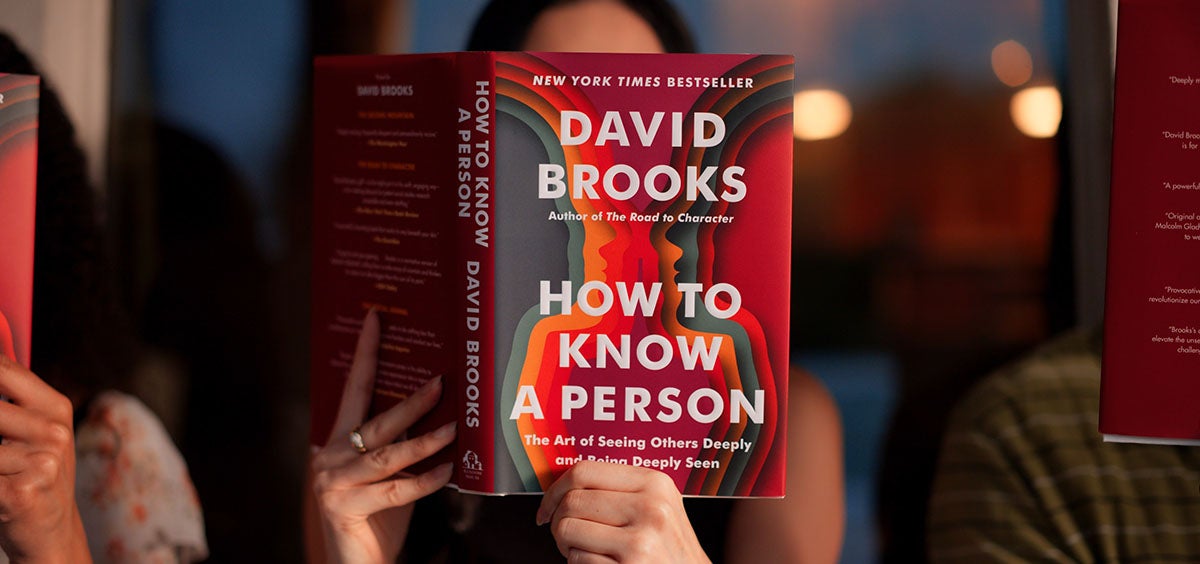
When I was younger, I would have been perfectly happy spending hours alone in my room reading, learning about my latest obsession, and letting my mind wander. But my mom was intentional about creating opportunities for me to engage and socialize—encouraging me to interact with all the guests who visited our house and making me serve as a greeter at my dad’s work events. She believed that connecting with others was a skill that had to be cultivated, even (or perhaps especially) for an introverted kid like me.
I’ve been thinking about that a lot lately after reading David Brooks's newest book, How to Know a Person: The Art of Seeing Others Deeply and Being Deeply Seen. It was recommended to me by my friend Bernie Noe, and I was eager to dive in because I know David and enjoyed his previous book, The Road to Character. (Also: Whenever Bernie recommends a book to me, I read it.) The key premise is one I haven't found in any other book: that conversational and social skills aren't just innate traits—they can be learned and improved upon.
As someone who has always been more comfortable making software than small talk, I found this idea both refreshing and informative. As a result, even though some of its advice may seem fairly rudimentary, the book is now my favorite of anything David has written.
While reading How to Know a Person, I took a ton of notes and reflected on my own communication style. In Chapter 6, "Good Talks," David dives into what makes a conversation meaningful. It really got me thinking about when I am fully present and engaged in a conversation, and when am I just trying to preserve my energy or avoid being interrupted. I had to laugh at myself a bit, because I know I've been guilty of talking about topics I find fascinating, like the history of fertilizer, without always checking to see if the other person is interested.
One powerful takeaway from the book is the importance of active listening—or, as David calls it, loud listening. “When another person is talking,” he writes, “you want to be listening so actively that you’re practically burning calories.” I’m pretty good at that kind of listening when I’m super interested in a topic, especially when I’m learning something new. But the book made clear how transformative it can be to bring that same enthusiasm when listening to someone talk about a hardship they’re dealing with or an accomplishment they’re proud of.
Fortunately, the book is full of practical advice for doing that. David emphasizes something I’ve found really helpful in my own life: asking open-ended questions—with phrases like "How did you…," "What's it like…," "Tell me about…," and "In what ways…"—that invite people to share their experiences and perspectives in a more in-depth way. David also recommends using the "looping" technique, where you paraphrase what someone has just said to ensure you've understood them correctly. And he endorses what experts call the SLANT method to convey attention and interest in a conversation: Sit up, Lean forward, Ask questions, Nod, and Track the speaker.
What I found especially compelling about the book is how it shows that these skills are relevant across all kinds of relationships and interactions. Whether you're catching up with a close friend, chatting with a coworker, or just exchanging pleasantries with someone while waiting in line for a cheeseburger, being fully present and attuned can transform the encounter. These simple practices can go a long way in making others feel heard and valued.
The more I read, the more I realized how much the book's insights connect to the broader challenges we face in today's world. Back in 1995, when I wrote The Road Ahead, I predicted that technology would make it easier for us to stay connected with our hometowns and share our lives with others. And in many ways, it has. But David argues in Chapter 8, "The Epidemic of Blindness," that technology has also contributed to a growing sense of loneliness and disconnection. We may be more connected than ever, but are we truly seeing and understanding each other?
This question becomes even more urgent when considering the social and political divisions David highlights. The statistics he cites about the rise in depression, suicide, and distrust are alarming, and he makes the case that this social unraveling is fueling our political divides. His discussion about how politics can become a substitute for genuine connection—leading people to get their satisfaction from yelling at those they disagree with instead of trying to understand them—highlights a trend that worries me a great deal.
In the book, David connects these social ills to changes in our education system. He argues that schools have shifted away from teaching what he calls “moral and social skills,” and that this has left us ill-equipped to build strong relationships and communities. It’s an interesting and timely argument for sure, but I wished it were further built out. I’d be interested in reading more about how David defines this type of teaching, how he measures the changes, and how he thinks education can help reverse some of these troubling social trends. In fact, I think there’s another book waiting to be written here.
For the most part, though, what makes David's book so compelling is that it challenges us to put its insights into practice. It's about being intentional in our interactions, whether that means asking more thoughtful questions, fully listening to the answers, or expressing genuine appreciation. It's about approaching conversations with generosity and curiosity, looking for ways to connect and understand. And it's about realizing that even small things—like asking the right question at the right time or giving a nice compliment—can make a big difference in building relationships. I’m certain that what I learned from the book will stay with me for a long time.
Overall, I can’t recommend How to Know a Person highly enough. More than a guide to better conversations, it’s a blueprint for a more connected and humane way of living. It's a must-read for anyone looking to deepen their relationships and broaden their perspectives—and I believe it has the power to make us better friends, colleagues, and citizens.
[enclosures] => Array
(
)
[categories] => Array
(
)
[uid] =>
)
[5] => Array
(
[uri] => https://www.gatesnotes.com/Brave-New-Words
[title] => Sal Khan is pioneering innovation in education…again
[timestamp] => 1716242400
[author] =>
[content] => Brave New Words paints an inspiring picture of AI in the classroom.

When GPT-4o launched last week, people across the internet (and the world) were blown away. Talking to AI has always felt a bit surreal—but OpenAI’s latest model feels like talking to a real person. You can actually speak to it, and have it talk back to you, without lags. It’s as lifelike as any AI we’ve seen so far, and the use cases are limitless. One of the first that came to my mind was how big a game-changer it will be in the classroom. Imagine every student having a personal tutor powered by this technology.
I recently read a terrific book on this topic called Brave New Words. It’s written by my friend (and podcast guest) Sal Khan, a longtime pioneer of innovation in education. Back in 2006, Sal founded Khan Academy to share the tutoring content he’d created for younger family members with a wider audience. Since then, his online educational platform has helped teach over 150 million people worldwide—including me and my kids.
Well before this recent AI boom, I considered him a visionary. When I learned he was writing this book, I couldn’t wait to read it. Like I expected, Brave New Words is a masterclass.
Chapter by chapter, Sal takes readers through his predictions—some have already come true since the book was written—for AI’s many applications in education. His main argument: AI will radically improve both student outcomes and teacher experiences, and help usher in a future where everyone has access to a world-class education.
You might be skeptical, especially if you—like me—have been following the EdTech movement for a while. For decades, exciting technologies and innovations have made headlines, accompanied by similarly bold promises to revolutionize learning and teaching as we know it—only to make a marginal impact in the classroom.
But drawing on his experience creating Khanmigo, an AI-powered tutor, Sal makes a compelling case that AI-powered technologies will be different. That’s because we finally have a way to give every student the kind of personalized learning, support, and guidance that’s historically been out of reach for most kids in most classrooms. As Sal puts it, “Getting every student a dedicated on-call human tutor is cost prohibitive.” AI tutors, on the other hand, aren’t.
Picture this: You're a seventh-grade student who struggles to keep up in math. But now, you have an AI tutor like the one Sal describes by your side. As you work through a challenging set of fraction problems, it won’t just give you the answer—it breaks each problem down into digestible steps. When you get stuck, it gives you easy-to-understand explanations and a gentle nudge in the right direction. When you finally get the answer, it generates targeted practice questions that help build your understanding and confidence.
And with the help of an AI tutor, the past comes to life in remarkable ways. While learning about Abraham Lincoln’s leadership during the Civil War, you can have a “conversation” with the 16th president himself. (As Sal demonstrates in the book, conversations with one of my favorite literary figures, Jay Gatsby, are also an option.)
When the time comes to write your essay, don’t worry about the dreaded blank page. Instead, your AI tutor asks you thought-starters to help brainstorm. You get feedback on your outline in seconds, with tips to improve the logic or areas where you need more research. As you draft, the tutor evaluates your writing in real-time—almost impossible without this technology—and shows where you might clarify your ideas, provide more evidence, or address a counterargument. Before you submit, it gives detailed suggestions to refine your language and sharpen your points.
Is this cheating?
It’s a complicated question, and there’s no one-size-fits-all answer. Sal notes that bouncing ideas off friends, asking family members to critique work, and using spellcheckers and tools like Grammarly—which can rephrase entire sentences—aren’t considered cheating today by most measures. Similarly, when used right, AI doesn’t work for students but with them to move something forward that they might otherwise get stuck on. That’s why, according to Sal, a lot of educators who first banned AI from class are now encouraging students to use it.
After all, mastery of AI won’t just be nice to have in a few years—for many professions, it’ll be necessary. Employees who can use AI effectively will be far more valuable than those who can’t. By incorporating this technology into education, we're both improving students’ experiences and outcomes and preparing them for the jobs of the future—which will become more enjoyable and fulfilling with AI in the mix.
That includes teaching. With every transformative innovation, there are fears of machines taking jobs. But when it comes to education, I agree with Sal: AI tools and tutors never can and never should replace teachers. What AI can do, though, is support and empower them.
Until now, most EdTech solutions, as great as they may be, haven’t meaningfully made teachers’ lives easier. But with AI, they can have a superhuman teaching assistant to handle routine tasks like lesson planning and grading—which take up almost half of a typical teacher's day. In seconds, an AI assistant can grade spelling tests or create a lesson plan connecting the Industrial Revolution to current events. It can even monitor each student's progress and give teachers instant feedback, allowing for a new era of personalized learning.
With AI assistants handling the mundane stuff, teachers can focus on what they do best: inspiring students, building relationships, and making sure everyone feels seen and supported—especially kids who need a little extra help.
Of course, there are challenges involved in bringing AI into schools at scale, and Sal is candid about them. We need systems that protect student privacy and mitigate biases. And there’s still a lot to do so that every kid has access to the devices and connectivity they need to use AI in the first place. No technology is a silver bullet for education. But I believe AI can be a game-changer and great equalizer in the classroom, the workforce, and beyond.
I recently visited First Avenue School in Newark, New Jersey, where Khanmigo is currently being piloted. We’re still in the early days, but it was amazing to see firsthand how AI can be used in the classroom—and to speak with students and teachers who are already reaping the benefits. It felt like catching a glimpse of the future. No one understands where education is headed better than Sal Khan, and I can't recommend Brave New Words enough.
[enclosures] => Array
(
)
[categories] => Array
(
)
[uid] =>
)
[6] => Array
(
[uri] => https://www.gatesnotes.com/Infectious-Generosity
[title] => The head of TED has his own ideas worth spreading
[timestamp] => 1716242400
[author] =>
[content] => Infectious Generosity is a timely, inspiring read about philanthropy in the digital age.
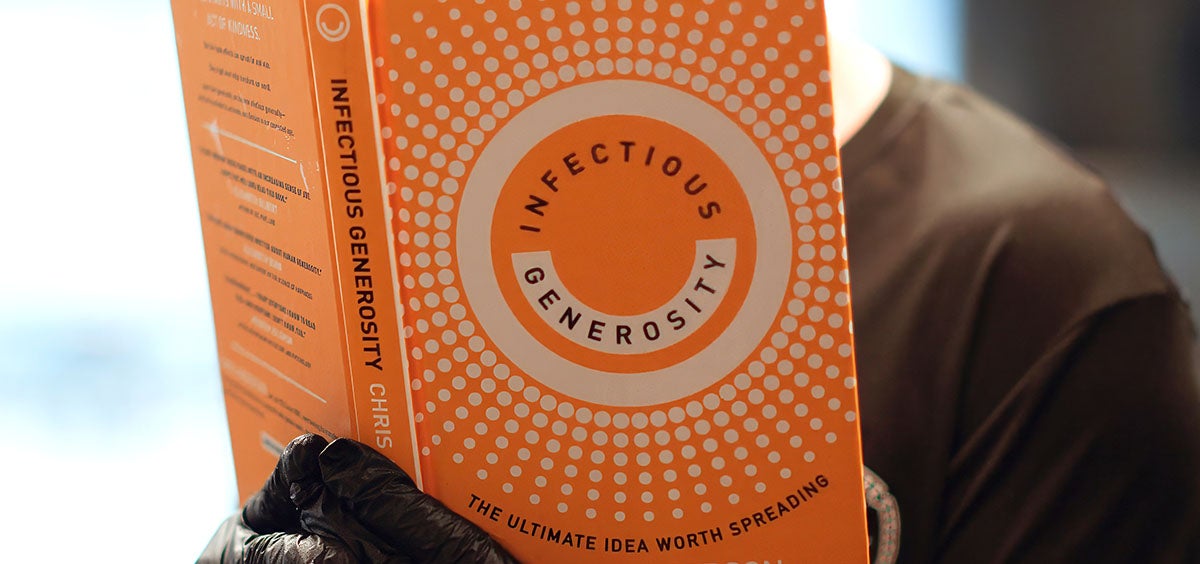
If you don’t know Chris Anderson’s name, you probably know his work. As the curator of TED for over two decades, Chris has transformed the once-exclusive conference into a global platform for ideas that “change everything”—making TED Talks a household name in the process. Chris and I share a deep interest in how innovation can help tackle major challenges and improve the world. We've collaborated several times, and he’s invited me to the TED stage periodically since 2009.
So when Chris told me about his new book, Infectious Generosity—which explores how the internet can amplify the impact of generosity—I was excited to dive in.
Chris’s central argument is that communications technology creates both an opportunity and a responsibility to give more. When we can witness the hardships of others firsthand, even from the other side of the planet, our instinct to help is activated. And the internet makes it easy to act on that instinct.
The book is filled with powerful examples of this dynamic in action, including viral fundraising campaigns like the ALS Ice Bucket Challenge, which raised over $200 million to fight the disease (and which I participated in), and online platforms like DonorsChoose, which allows anyone to support a classroom project with just a few clicks. Each story shows the power of people joining up to do extraordinary things.
But Chris doesn't gloss over the challenges of the digital age. Like other observers, he notes that social media platforms have turned the internet into an “outrage-generating machine” that drives us apart instead of bringing us together. As we saw with the spread of Covid-19 misinformation, online spaces can easily promote polarization and falsehoods instead of empathy and truth. What’s more—even as the ease of giving has increased, overall giving levels have not. In fact, a 2022 report from Giving USA found that individual giving as a percentage of disposable income has remained relatively flat over the past four decades.
People are more connected than ever—but that connection hasn’t always fostered the generosity we’d want and expect. That will only happen at scale, Chris argues, if individuals, nonprofits, businesses, and policymakers all make a concerted effort. Fortunately, the book offers a roadmap we can follow: Tell more uplifting stories of everyday generosity, redesign social media to promote prosocial behavior, and expand our definition of generosity itself—to include bridging divides, sharing knowledge, enabling connections, extending hospitality, and others.
I was especially intrigued by Chris's proposal of a “universal giving pledge,” where everyone commits to donating 10 percent of their income or 2.5 percent of their wealth annually. It’s similar to what many religions already encourage of their followers, if only by another name. And it’s reminiscent of the Giving Pledge, which Melinda, Warren Buffett, and I launched in 2010 to encourage billionaires to dedicate the majority of their wealth to philanthropy, either in their lifetime or wills. For me, that has meant working to save and improve lives through the Gates Foundation—which is the most meaningful work of my life.
Just as the Giving Pledge aims to make giving the norm among the wealthy, a universal pledge has the potential to inspire millions of people at all income levels to give more. If universally adopted, Chris calculates, such a pledge would generate over $10 trillion every year and unlock immense new resources to address health, poverty, education, and more.
Reading this book, I was reminded of my own mindset when I first thought about the digital revolution—about how it could bring the world closer together, make people feel less lonely, and help us tackle our biggest challenges. It’s great to see that someone still passionately believes in that promise and has ideas for how we can make good on it.
It's true that a few of Chris’s boldest, most ambitious proposals, like the universal giving pledge, will be challenging to implement. Still, I find his idealism infectious and inspired—especially because advances in artificial intelligence will likely amplify technology's potential as a generosity engine. At a minimum, AI will give us more potent tools to understand causes, mobilize donors, and target giving for maximum impact in the coming years. The key is to design these systems so they identify inequities, catch our biases, tap into the best of human nature, and nudge us toward our most generous selves.
If you want to help create a more generous world but don’t know where to start, Infectious Generosity is the book for you. It's an invitation to rethink and reinvent philanthropy for the digital age—and I believe that if enough of us embraced its message, the world really would be a much more generous place.
[enclosures] => Array
(
)
[categories] => Array
(
)
[uid] =>
)
[7] => Array
(
[uri] => https://www.gatesnotes.com/The-Women
[title] => The Women gave me a new perspective on the Vietnam War
[timestamp] => 1716242400
[author] =>
[content] => Kristin Hannah’s wildly popular novel about an army nurse is eye-opening and inspiring.
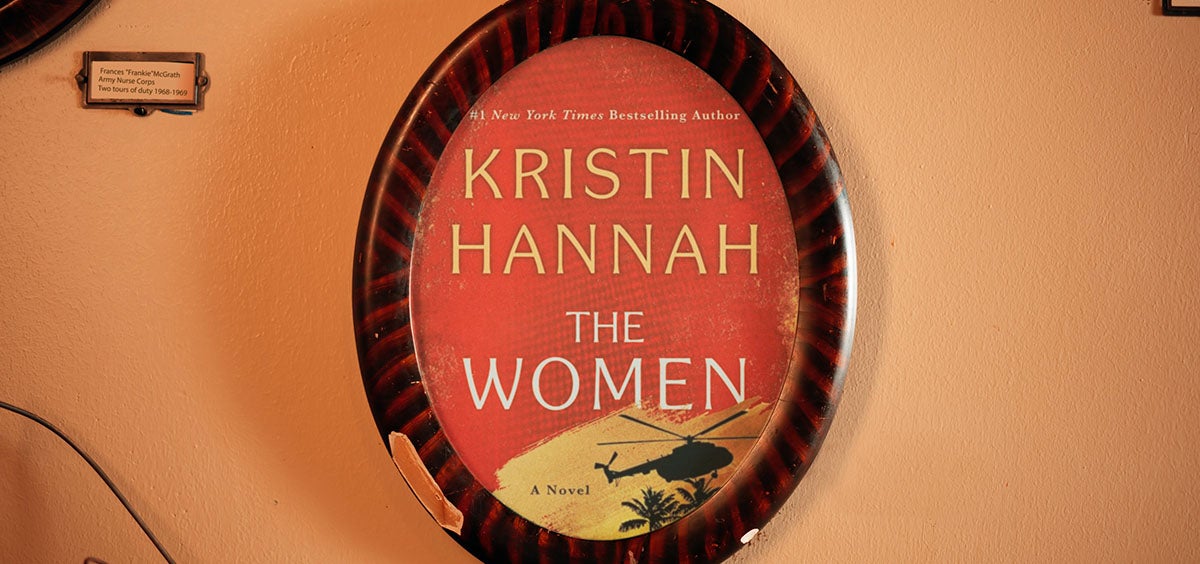
When I was 15 years old, one of my teachers took me to my first Vietnam War protest.
My teacher ended up getting in a bit of trouble for it, but I’m thankful he took us. The war was such a centerpiece of what was going on in the 1960s. It was incredible to experience what seemed like (and turned out to be) history in the making. I remember feeling like I was a very small part of something big.
I thought about that experience a lot while I was reading The Women by Kristin Hannah. This terrific novel tells the story of Frankie McGrath, an army nurse who serves two tours on the frontlines in Vietnam before returning home to a country rocked by protest and anti-war sentiment.
I wasn’t familiar with Kristin Hannah before reading The Women, even though she’s written a number of books that have done quite well (and this one is already a huge hit). My brother-in-law John—who served two tours in Vietnam and found the book fantastic—recommended it to me when he found out I was headed there for vacation. I actually read the book in Da Nang, which was where U.S. troops first landed back in 1965.
Although I’ve read and watched a lot about the war in Vietnam, The Women made me think about it in a new light. I didn’t know about the critical role so many women played, and it was both eye-opening and inspiring to learn more about the frontline nurses who saved countless lives.
At the beginning of the book, Frankie is inspired to enlist in the army after a friend suggests that women can also be heroes. She grew up looking at her father’s wall of veterans in his office, where portraits hung of all the male family members who had served. Hannah writes, “Why had it never occurred to Frankie that a girl, a woman, could have a place on her father’s office wall for doing something heroic or important, that a woman could invent something or discover something or be a nurse on the battlefield, could literally save lives?”
The book makes it clear that Frankie and her colleagues are true heroes—but their presence in Vietnam is largely ignored and forgotten, even by those who served with them. In one particularly memorable scene after she returns from war, Frankie seeks mental health treatment at her local VA hospital. It’s clear that she is suffering from PTSD and needs help. But the hospital turns her away because she is a woman and, therefore, couldn’t possibly be a veteran.
Frankie hears the phrase “there weren’t women in Vietnam” from her fellow veterans over and over in the book. What they mean is that women weren’t on the frontlines. But as the book makes clear, if you’re in a medical role near the war front, you experience every bit of the trauma of war. Frankie treats hundreds of people who died or suffered life-changing wounds. She is forced to hunker down whenever the base she works on is under attack. There are moments when she thinks she is going to die. Her time overseas is grim and horrifying, and I can’t imagine how devastating it must have been for real female Vietnam veterans to have their experiences discounted after coming home.
This is a novel, of course, and not a history book. But the author spent a lot of time talking to female Vietnam veterans about their experiences, and the depth of her research comes through in the writing.
I was especially interested to read about Frankie’s slow revelation that the U.S. government has been lying about the war. When she first arrives in Vietnam, she believes that the U.S. is winning the war. Over time, she begins to notice that the upbeat message coming from the military leadership doesn’t match with what she’s experiencing on the ground. After one particularly gruesome day of fighting, Frankie’s friend and coworker Barb notes that “the Stars and Stripes reported no American casualties yesterday. Seven men died in OR One alone.”
I remember watching the nightly news with my parents during the war and hearing that way more North Vietnamese soldiers had died than American soldiers. The government told us that casualty counts were the figure of merit, and by that measure, we were winning the war. Later, we found out the numbers had been distorted. And death totals were not even the right metric in the end, because the North Vietnamese were fighting for their very existence. The number of men they could call up at will was way beyond anything we could ever deal with. (I highly recommend reading H.R. McMaster’s book Dereliction of Duty if you want to learn more about this.)
The Women is an important reminder that no one was more impacted by these lies than the brave men and women serving overseas. They were sent to the frontlines of an unwinnable conflict, and they returned home to a nation that had turned against both the war and the people who served in it. Frankie reflects that “the world of hippies and protesters felt far, far away. It had nothing to do with the guys dying over here. Except that it did. The protests made them feel that their sacrifices meant nothing or, worse, that they were doing something wrong.”
I like to think that has changed by now. Enough time has passed that most people acknowledge the individual heroism that took place in Vietnam, even though history doesn’t look kindly on the war itself. People over there did things that we can—and should—be proud of. That’s one reason why I’m glad to see a book like The Women doing so well. It’s a beautifully written tribute to a group of veterans who deserve more appreciation for the incredible sacrifices they made.
[enclosures] => Array
(
)
[categories] => Array
(
)
[uid] =>
)
[8] => Array
(
[uri] => https://www.gatesnotes.com/Slow-Horses
[title] => I binge-watched this great British spy series
[timestamp] => 1716242400
[author] =>
[content] => Slow Horses stars Gary Oldman as the anti-James Bond.
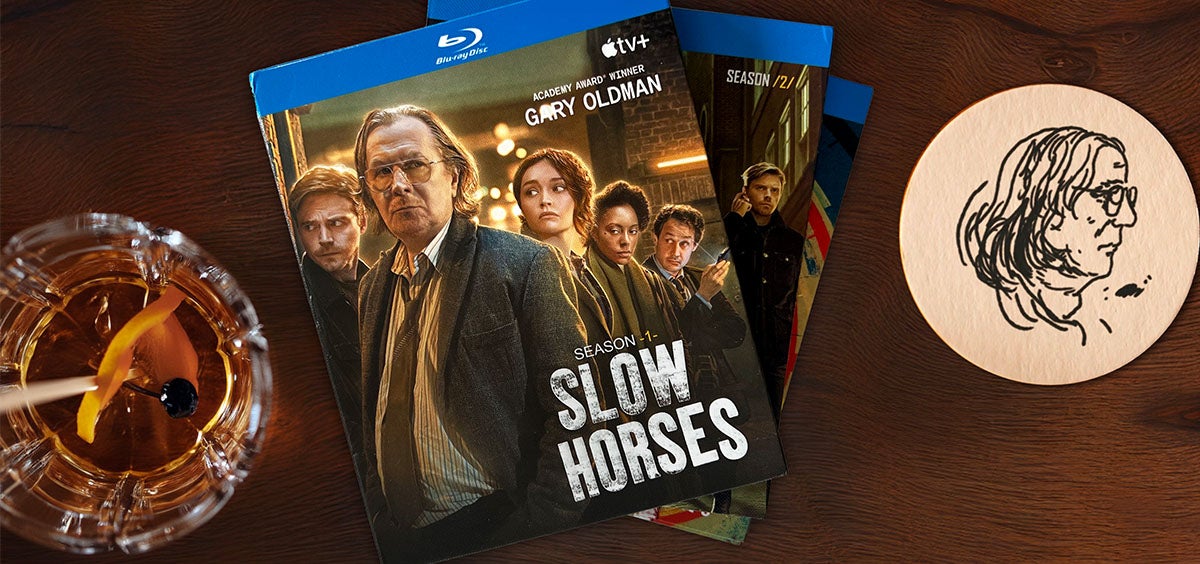
I’m a huge fan of spy movies and shows. Although I like James Bond just fine, I really go for the characters who rely on their brains, aren’t especially good in a fistfight, and don’t fill out a tuxedo too well.
Jackson Lamb, the lead character in the Apple TV+ series Slow Horses, is an extreme version of one of those spies. He rarely bathes. His shirt is always covered with crumbs, and he wears a stained trench coat that hasn’t been washed in years. He’s a smoker and an alcoholic. He has a terrible temper and is nasty to his subordinates. He doesn’t even attempt to hide his flatulence. If you asked an AI to invent the opposite of James Bond, it would give you Jackson Lamb.
But Lamb has one thing in common with 007: He is really good at his job. Played by Gary Oldman, he’s the head of Slough House, a fictional group inside the British intelligence agency that people get sent to when they mess up badly, but not quite badly enough to get fired. It’s a bureaucratic dumping ground where the agents aren’t expected to do any real work—they’re just biding their time until they can get reassigned. Slow Horses gets its title from the derisive nickname that the rest of British intelligence uses for Slough House agents.
The show reminds me of John le Carré novels, which have lots of complex characters and complicated plots. (In fact, Slow Horses is based on a series of novels by British novelist Mick Herron.) Lamb clearly resents getting stuck with this dead-end job—you eventually find out how he ended up there—but he’s incredibly capable and takes his work seriously. Just when it seems like things can’t turn out well, you find out that he has outsmarted everybody. And he manages to get the best out of his people in a tough love kind of way.
One of Lamb’s key agents is River Cartwright, who’s assigned to Slough House after taking the blame for a big foul-up in the show’s opening scene. River makes a lot of mistakes, often with serious consequences, but he’s a good agent and you’re always rooting for him. His grandfather was a legendary intelligence agent, and River struggles to live up to his expectations.
The other characters are well fleshed out too—well enough that when one of the agents is killed, you really feel it. (At least I did!) You also meet some powerful and fascinating people at the main office who plot and scheme against each other to gain power. Kristin Scott Thomas is especially good as Lamb’s clever boss, Diana Taverner.
Although I don’t know anything about the world of spies, most of the spycraft seems pretty believable—there are no tricked-out Aston Martins in this show. Still, I had to laugh at the way Slough House’s computer expert can hack into any device anywhere in record time. It moves the plot along, but it’s hard to believe.
Whenever I’m talking with someone about great spy movies, I always mention two that both happen to star Robert Redford: Three Days of the Condor, which was a hit in 1975, and a hidden gem called Spy Game, which came out in 2001. Now I’m going to add Slow Horses. It’s up there with the best spy stuff I’ve seen.
[enclosures] => Array
(
)
[categories] => Array
(
)
[uid] =>
)
[9] => Array
(
[uri] => https://www.gatesnotes.com/Amazing-stories-I-wish-everyone-knew
[title] => Amazing stories I wish everyone knew
[timestamp] => 1715032800
[author] =>
[content] => Meet some of the heroes who are fighting poverty and saving lives.

Have you ever heard a story that was so cool you couldn’t help telling everyone you met about it? Something you knew and wished that everyone else did too?
That’s how I feel about the people whose work I get to learn about through the Gates Foundation. Every day, around the world, they save lives and help people lift themselves out of poverty. Some are scientists. Others are educators, nurses, midwives, or advocates. Their work is so inspiring to me that I’ve committed virtually all of my wealth to supporting it.
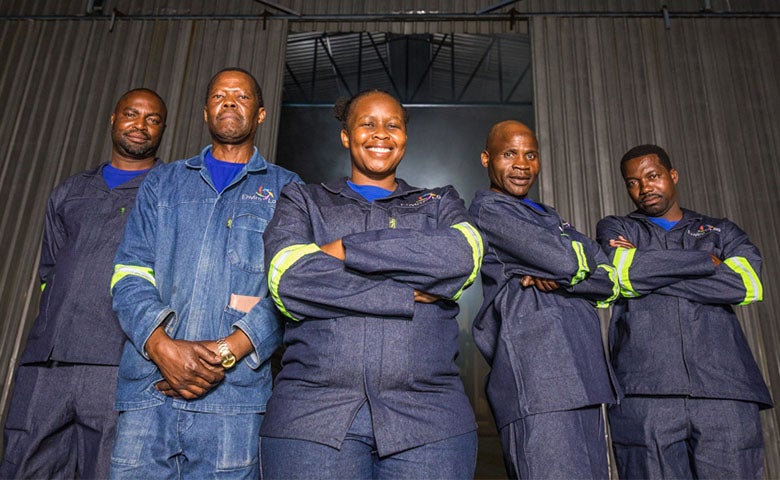
These workers at Enviro Loo in South Africa produced a new toilet that has transformed sanitation at public schools, making it much easier for students to attend.
I love sharing their stories. At a time when so much is going wrong with the world—wars, inequality, climate change—it’s important to remember what is going right. And that when we make progress in one area, there are almost always beneficial ripple effects.
Here's the story of how work on just one thing—cows—can ultimately touch millions of people’s lives.
The best part of my job is getting to connect with people who are either doing work like this or benefiting from it. In Makueni County, Kenya, I met a farmer named Josephine Kimonyi, who learned from her neighbor and fellow farmer about a new variety of cow (developed with funding from the foundation) that produces more milk. Her neighbor had been raising the new-and-improved cow for some time, and she’d urged Josephine to try it out.
Josephine told me that, thanks to the new breed, she now gets twice as much milk as she used to. She was filled with pride as she described the joy of being self-employed, earning enough income to send her kids to school, and even using some extra milk to help out her neighbors.
If you want to hear more about Josephine’s story and the magic of improved livestock, watch this video.
Josephine Kimonyi and her cow, Mukuni (left). Mukuni produces 16 liters of milk a day, nearly double what Josephine’s old cow was able to produce (right).
When I see how much passion people like Josephine have for helping themselves and their neighbors, I’m inspired to help too. I’d encourage you to check out this YouTube playlist, which highlights even more successes. I hope these stories will be as inspiring for you as they are for me.
[enclosures] => Array
(
)
[categories] => Array
(
)
[uid] =>
)
[10] => Array
(
[uri] => https://www.gatesnotes.com/Fonio
[title] => Could a grain older than the wheel be the future of food?
[timestamp] => 1713218400
[author] =>
[content] => Lost crops like fonio could help us fight climate change and malnutrition.

What grain did your family grow up eating? I’m from the United States, where wheat and corn are king. But if I had been born in East Asia, I probably would’ve eaten a lot more rice as a kid.
If you grew up in West Africa, you might have eaten an ancient grain called fonio. Fonio has been feeding families in West Africa for more than 5,000 years, longer than any other cultivated grain on the continent. That makes it older than toilets, the wheel, and even writing. It’s a super small grain with a texture that reminds me a bit of couscous when cooked in hot water. Its nutty taste is delicious on its own but is also good when ground into flour.
Fonio is just one part of a much bigger family of remarkable ancient grains: the millets. Perhaps you’ve heard of finger millet. It’s a staple in Uganda and parts of Kenya and Tanzania, and it’s beloved in India where it is called ragi. Or maybe you’ve heard of teff, a longtime favorite in Ethiopia where it’s used to make injera.
Millets have been around for centuries, but they’re currently experiencing a resurgence—both for consumers who enjoy their taste and for farmers who appreciate how reliable they are to grow.
Fonio, in particular, is like farming on easy mode. You wait until a good rain comes, lightly till the soil to loosen it up, and then scatter the seeds on the ground. Two months later, you harvest the grain.
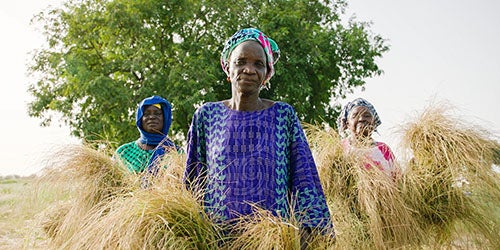
Farmers in Senegal harvest fonio stalks to be processed.
No wonder West African farmers call it the “lazy farmer’s crop”! Fonio grows in the Sahel, a semi-arid region just south of the Sahara Desert. To thrive there, a crop must be drought-tolerant and able to grow in poor quality soil. Fonio not only handles the dry conditions with ease but even rejuvenates the soil as it grows.
As climate change continues to make growing seasons more unpredictable, crops like the millets will become more and more important. The Gates Foundation has been working with partners like CGIAR for years to make staple crops like corn and rice more climate resilient. Millets naturally have many of the qualities farmers look for in a crop, and they could play an important role in helping farmers adapt to a warming world.
They can also help us fight malnutrition. When Europeans first arrived in West Africa, they called fonio “hungry rice” because it grew so quickly that you could eat it at times when other foods weren’t available. Today, many people would probably call it a “superfood.”
Consider this:
- Fonio is a great source of protein, fiber, iron, zinc and several key amino acids.
- Finger millet has 10 times the calcium of wheat.
- Teff is the only grain that is high in vitamin C.
In a world where food security is increasingly uncertain in some parts of the world, these foods could be a game changer. I’ve written a lot on this blog about how malnutrition is the first problem I would solve if I had a magic wand. Having access to a high-quality nutrition source could help more kids’ development stay on track.
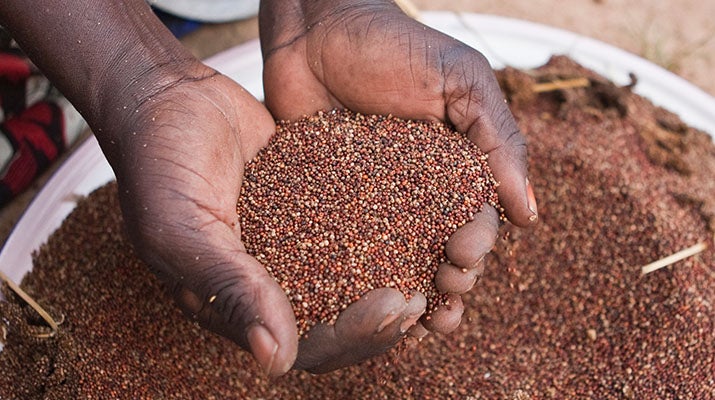
Nutritious and drought-tolerant, finger millet could bolster food security in Africa.

It makes a delicious porridge, too.
Nutritious and drought-tolerant, finger millet could bolster food security in Africa.
It makes a delicious porridge, too.
So if millets have so much going for them, why aren’t they eaten everywhere?
In the case of fonio, the answer is simple: Until recently, it was hard to process on a commercial scale. The part you eat is surrounded by a hard hull, which was traditionally removed by skilled women using either a mortar and pestle or their feet to crack the shell. It’s a time- and labor- intensive process that makes it hard to turn a profit. In Senegal, only 10 percent of the fonio grown is sold at market—nearly all of it is consumed directly by farmers and their families.
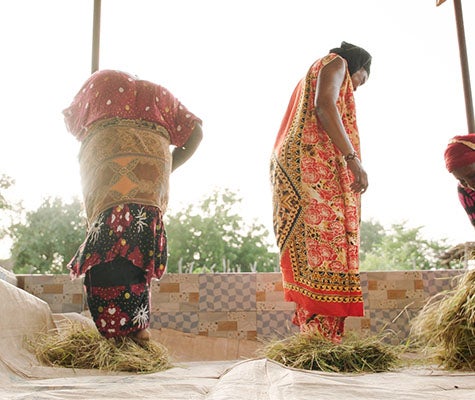
Traditionally, harvesting fonio is hard work. Skilled women use their feet to remove the hard hull surrounding the part you eat.
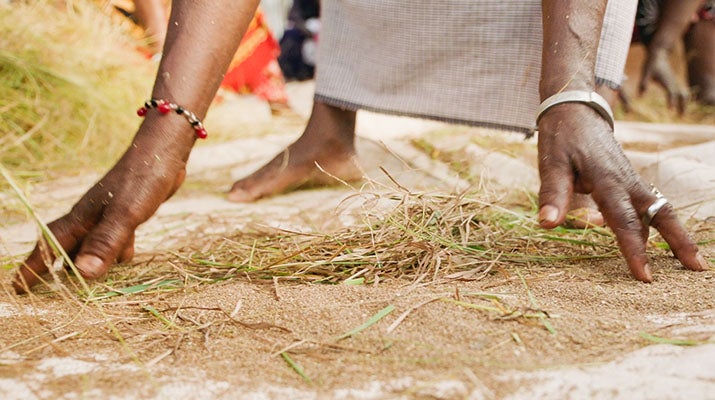
It’s time intensive as well, taking up to seven hours to clean, wash, dry and pre-cook the grain.
Traditionally, harvesting fonio is hard work. Skilled women use their feet to remove the hard hull surrounding the part you eat.
It’s time intensive as well, taking up to seven hours to clean, wash, dry and pre-cook the grain.
Luckily, that’s changing. Terra Ingredients—an American company that is helping to bring the grain across the Atlantic—recently partnered with a Senegalese company called CAA to build a commercial processing facility right in Dakar. I got to visit it during my trip, and it was inspiring to see how they’re enabling local farmers to earn a better living.
Initiatives are also underway to improve the market presence of crops like teff, the millet used to make injera, which is gaining international popularity as a gluten-free option. It’s even on the rise within Ethiopia. Thanks to the increased availability of teff flour and ready-made injera, the country has seen a nearly 50 percent increase in teff mills, injera-making enterprises, and retail outlets. Food scientists are also developing new processes and products for finger millet. It’s now eaten in schools across Kenya as part of the ugali porridge served during lunch.
Yet, many people still just don’t know about the magic millets. Despite their potential, all of the millets I’ve mentioned are what experts call “neglected and underutilized crops,” a term that refers to crops that have fallen into disuse and been historically ignored by agricultural R&D.
That’s changing, too, in part due to the efforts of one person: Pierre Thiam. He’s a Senegalese chef who has made it his mission to create more opportunity for African farmers and spread the word about what he calls “lost crops.” (He’s even hosting a conference focused on them in Dakar later this year.) I was lucky enough to get a lesson in cooking fonio from him at the Gates Foundation’s Goalkeepers event in 2022—the mango salad we made was delicious.

I had a great time learning how to cook fonio with Chef Pierre at Goalkeepers in 2022.
Chef Pierre understands that one grain—or even a whole magic family of grains—isn’t the answer to the world’s food security problems. We need to build strong, diverse food systems that pull from lots of different sources. But if you want to understand how to help farmers adapt to climate change and make crops more resilient, ancient grains like the millets are a great place to start. They’ve survived for centuries, so they’re clearly doing something right!
[enclosures] => Array
(
)
[categories] => Array
(
)
[uid] =>
)
[11] => Array
(
[uri] => https://www.gatesnotes.com/How-to-cut-child-mortality-in-half-again
[title] => How to cut child mortality in half… again
[timestamp] => 1712008800
[author] =>
[content] => We already know how to save millions of newborn lives.
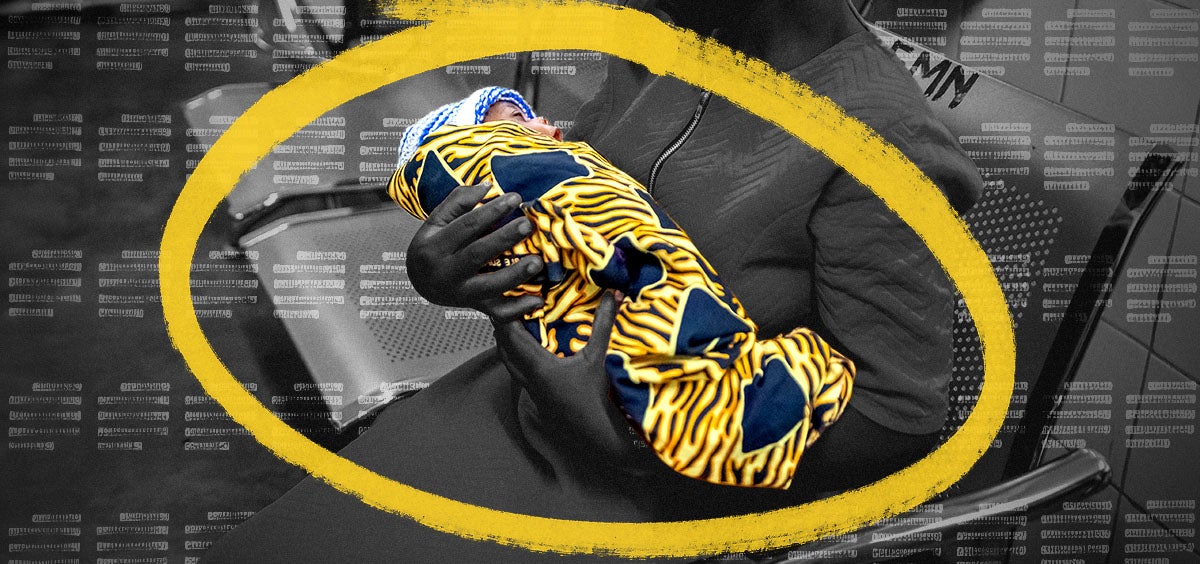
When Paul Allen and I started Microsoft, we had an ambitious goal: to put a computer on every desk and in every home. A lot of people thought we were out of our minds. But we believed in the power and potential of these machines to change the world. So every day, we came to work determined to make it happen. Now, it’s hard to imagine the world any other way. In a few short decades, that goal became reality for billions.
In 1990, the possibility that the world would be able to cut child mortality in half over the next thirty years would have seemed just as remote. But that’s exactly what happened. And I believe the world can do it again by 2040—we can cut child mortality in half once more—and get even closer to ending all preventable child deaths.
My introduction to this issue came 27 years ago, when I read a piece in the New York Times about deadly drinking water in the world’s poorest countries that contained the following statistic: “Diarrhea kills some 3.1 million people annually, almost all of them children.” Learning that shocked me to my core. There’s no greater pain than the death of a child. The death of millions of them—from something easily treatable in much of the world—is tragedy after tragedy on an almost unfathomable scale.
Before long, I was learning everything I could about global health generally and child mortality specifically. And shortly after, the Gates Foundation, which was just getting off the ground, made it our mission to fight preventable health disparities like this around the world—with an emphasis on children whose lives were being cut short before they ever had a chance.
We had phenomenal partners in that effort across governments, in the private sector, and from foundations and organizations that share our mission. And by 2019, something remarkable had happened—what I consider to be one of the most important things humanity has ever achieved: In under three decades, child mortality was cut by more than half. (For more about how this happened, and all the partners who deserve credit, see my blog post from two years ago.)
Measles deaths fell 90 percent thanks to vaccines. Pneumonia deaths fell 70 percent, also thanks to vaccines. Deaths from diarrhea—which killed 3 million kids a year not too long ago—fell 70 percent, too, thanks to low-tech interventions like oral rehydration solution, large-scale sanitation programs, and (yes, you guessed it) a new rotavirus vaccine. Malaria deaths fell 36 percent thanks to effective bed nets and sprays. Even deaths from HIV, which more than tripled as a killer of kids in the 1990s, fell 33 percent once we figured out how to protect and treat mothers so they don’t pass the virus on to their babies.
It wasn’t just the child mortality rates from these diseases that went down, though. Year after year, the raw number of overall childhood deaths fell—even as the global population rose—from 12 million in 1990 to five million in 2019.
We’ve made incredible progress, and we keep moving in the right direction. But we aren’t moving fast enough. Just under five million kids still die each year before reaching their fifth birthday. Another two million are stillborn. Virtually all of these deaths occur in low- and middle-income countries—and every single one is a tragedy that devastates families and entire communities.
My blog post from two years ago told the first part of this story—explaining what we know about child mortality and what we did to cut it in half once before. This is part two: how we can cut child mortality in half again, to below three million deaths a year by 2040.
The main reason I believe we can do this is because we already have most of the tools we need. As we shared in last year’s Goalkeepers Report, “Researchers have learned more about the health of mothers and babies over the past 10 years than they did in the century before that.” While continued innovation is always necessary, we currently have the know-how to save millions of lives—it’s a matter of putting it to use and making sure it reaches the children who need it most.
That begins before children even take their first breaths. It begins with mothers.
When a mother dies during childbirth, her child has a more than 63 percent chance of dying before their first birthday. To save those kids’ lives—and so many others by 2040—we need to focus on keeping women healthy before and throughout pregnancy, so they can deliver and raise healthy children.
Stop women from bleeding to death after childbirth
Around the world, postpartum hemorrhage (PPH)—defined by the WHO as losing more than half a liter of blood within 24 hours of childbirth—is the primary cause of maternal mortality. Often, it isn’t caught until it’s too late, because it’s hard to know how much blood loss is too much.
But with a low-cost tool called a calibrated obstetric drape and a trained birth attendant monitoring it, blood loss can be accurately measured in real time. By bundling five interventions that stop the bleeding and administering them simultaneously rather than sequentially—an approach known as E-MOTIVE—healthcare workers can slash cases of severe bleeding by 60 percent. By screening for and treating anemia, a common cause of PPH, during pregnancy, the world can prevent some PPH cases entirely.
Prevent life-threatening infections during labor
Sepsis—a life-threatening condition in which the immune system overreacts to an infection, causing widespread inflammation and organ damage—is another common cause of maternal mortality. In the U.S., it’s responsible for 23 percent of cases. But researchers have recently discovered that azithromycin, one of the world’s most common antibiotics, can reduce sepsis cases by a third when given preventatively. This discovery will be lifesaving for mothers—and therefore babies—especially in places where many women give birth at home, in conditions that aren’t necessarily sterile.
Speed up the development of babies’ lungs
When babies are born pre-term, before 37 weeks of pregnancy, their organs are still under-developed—especially the lungs, one of the last organs to finish growing inside the womb. That leaves these babies vulnerable to a whole host of potentially fatal complications. But now, if doctors learn a mother is at risk of going into pre-term labor, they can prescribe her antenatal corticosteroids that help her baby’s lungs grow as much as they would over a few weeks—in just a few days.
Fight malnutrition before and after birth
Without a healthy microbiome—the universe of bacteria inside the gut—babies struggle to absorb the nutrients in breast milk no matter how much they’re fed. That malabsorption is doubly destructive because it can lead to malnutrition, which can leave babies more susceptible to contracting and dying from pneumonia.
While experts used to believe that malnutrition could only be treated at around six months—once a baby starts eating solid foods—we now know that the microbiomes of mothers and babies are connected. That means micronutrient supplements can be given to pregnant women; when they are, babies gain an additional 5 grams of weight each day during the late stages of pregnancy and are more likely to be born with a healthy gut.
And when a baby is born underweight or pre-term, probiotic powders that include bifidobacteria can be added to breast milk to improve their digestive system, help them absorb nutrients, and reduce their risk of contracting severe infections and dying.
The focus, with each of these interventions, is on the beginning of a newborn baby’s life (and the lead-up to it). Why? Because half of all deaths of children under five occur in the first 28 days. If a baby is born healthy and survives that first month, the odds increase dramatically that they will live to see their fifth birthday—and then onto adulthood. Making this happen will require renewed investments by governments and organizations around the world to get these life-saving interventions out to the people and places where they’re so sorely needed. But it doesn’t require much new invention. Again: The solutions to cut child mortality in half again already exist. (And they’re all low-cost.)
Of course, there’s still much more to do to eliminate preventable deaths of children altogether. We need to continue improving sanitation and increasing access to clean drinking water around the world. We need to develop a vaccine for HIV and next-generation malaria vaccines to really stop them in their tracks; as we saw over the last 30 years, diseases with effective vaccines declined much faster than those we try to control without them.
We also need to ramp up vaccine distribution efforts, with an emphasis on reaching the 60 million “zero-dose” kids in lower-income countries who’ve never received a single immunization and now make up half of all childhood deaths from diseases with effective vaccines. These numbers spiked during the pandemic, when routine immunizations were disrupted and vaccine misinformation surged. Fortunately, Gavi, the Vaccine Alliance—which has helped vaccinate over 981 million children in the world’s poorest countries since 2000—is working around the clock to reach these kids. The organization will be having its next replenishment cycle soon, and the more money raised, the more lives saved. I often say that giving to Gavi is the best investment I’ve ever made.
None of this work is easily accomplished. Most goals worth achieving aren’t, though, especially one as important as this. But with the right commitment, I think preventable child deaths will one day be as unimaginable to us as life without computers. And in the not-too-distant future, a world where all children have the same chance to survive and thrive—no matter where they’re born—will become reality, too.
[enclosures] => Array
(
)
[categories] => Array
(
)
[uid] =>
)
)
)



